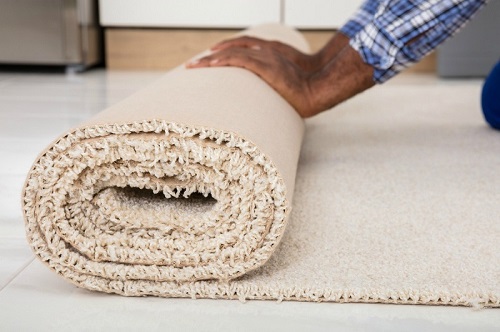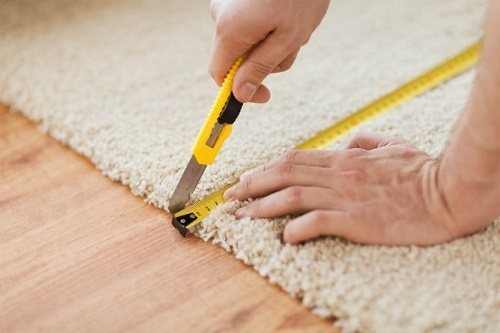Whether you are ready to try your hand at installing carpet or you just want to use an existing leftover to make your own carpet, cutting the carpet is a big part of the job. Using the right type of cut for the project at hand makes it a lot nicer and ensures the cuts don’t go as planned. A few mat-cutting techniques in your skill arsenal will let you cut both straight edges and delicate shapes with confidence.
Turn over
When it comes to cutting carpet of any type, turning it over first makes the job immensely easier. The backing is flat, keeping what you are doing completely visible, while the carpet fibers can be thick or nubby, hampering or moving the knife as you try to cut a straight line. Place a long ruler down to draw a marker line on the back of the mat where a straight cut is needed, then hold the ruler on that line as you make the cut. Use a sharp knife, which is essential for making a clean cut; you may need to change the blade several times during a large carpet project.
Fun With Shapes
In some cases, such as when making your own carpet or patterned rug, your design requires unusual shapes – a cloud-shaped rug for a child’s room or your own home two-tone zebra print area rug. , for example. Draw the shape you want to create on the back of the mat using a permanent marker. If the shape requires intricate detailed cuts, make a corrugated template as a guide for the knife. Place the template down, if using one, along with the design. Slowly cut it out using the tip of the knife. Making slow, small cuts works well for short spans with lots of turns or angles. If the knife does not cut well,
You may also like to read, how to clean cricut mat. To know more visit our Blog https://firstgradeappliances.com/.
Work near walls and doors
While a utility knife can be used to cut excess carpet as you hit walls or other straight obstructions, it is not the most efficient tool for the job. A double-blade wall cutter is designed specifically to cut that excess carpet flap at the end of the room. This tool has a flat plate that rests on the ground, and a handle on the top for handling. Press against the corner of the carpet that requires cutting along a wall or obstacle, and slide it along to perfectly slice the carpet. The mower also has a guide bar to help tuck carpet under trim at the bottom of the wall.
Precise measurements
No matter how good you are at cutting the carpet, an inaccurate measurement can mean the carpet is failing as much as it needs, so you’ll have to splice in a patch or start all over. Measure a room from its widest point – while you may think the walls are perfectly straight, there’s a chance they aren’t. Measure the width and length of several places, write the longest measurement. Include all closets, if they are being carpeted as well. All-round down to the nearest foot to ensure there is plenty of extra material to work with – trimming is easier than patching. Door-to-door rather than wall-to-wall measurement in a room with doors, because the doors are usually set back a little further than the walls. You might end up with a hole in the carpet near the doors if wall-to-wall measurement is used.

